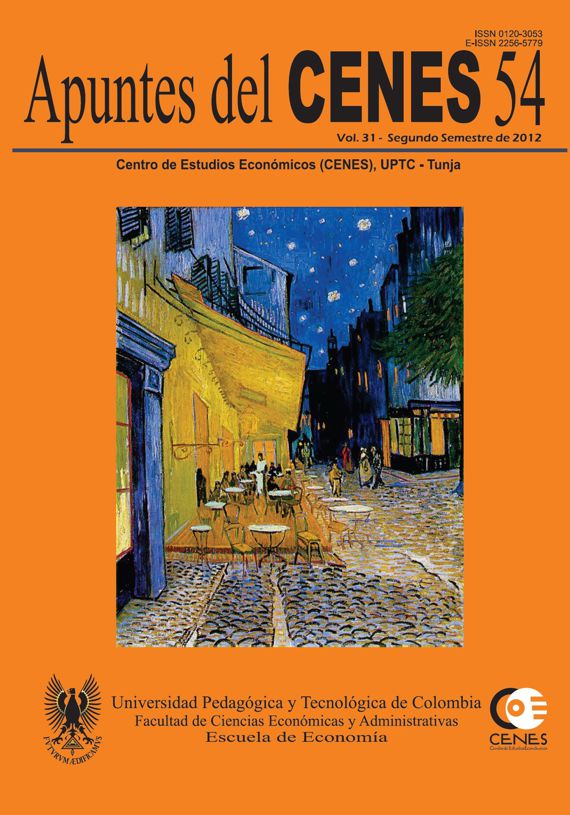An interpretation of the concept of knowledge management proposed by Nonaka & Takeuchi using literary fiction

Abstract
This article aims to present the role of literary fiction -narrative, metaphor and analogy and its expression through rhetorics- in organizational contexts such as the research and practice of management sciences, by using it for the interpretation of the concept of knowledge management proposed by Nonaka y Takeuchi (1995). This information is useful for researchers, both of social and human sciences, as for managers and strategists because they would have the opportunity of exploring the potential that fiction has not only as a “way of entertainment” but as a media of transferring knowledge within organizations.Keywords
Literary fiction, methaphor, analogy
Author Biography
Rosalba Frías-Navarro
Dr. Rosalba Frias-Navarro is an Associate Professor in the Faculty of Agricultural Sciences, Universidad de La Salle – Bogotá, Colombia. She has a bachelor’s degree in Agricultural Engineering, MSc. in Management, and PhD in Engineering, Industry and Organizations, Universidad Nacional de Colombia. Her research interests include knowledge creation oriented to rural sustainable development programs in post-conflict settings, social engineering, and rural extension programs.
References
- Aktouf, O. (2009). La administración: entre tradición y renovación (4ª ed.). Cali: Universidad del Valle.
- Alifano, R. (2007). La poesía, la metáfora y otros temas. diálogo con Jorge Luis Borges. BuenosAires: Alloni, Proa.
- Arendt, H. (2003). La condición humana. Barcelona: Paidos.
- Barney, J. B. (1995). Looking inside for competitive advantage. Academy of ManagementExecutive, 9(4), 49-61.
- Castaneda, C. (2000). Las enseñanzas de don juan (2ªed.).México: FondodeCultura Económica.
- Chamizo, P. J. (1998). Metáfora y conocimiento. Málaga: Universidad de Málaga.
- De Sousa Santos, B. (2009). Una epistemología del sur (1 ed.). México: SigloXXI.
- Deleuze, G. (2006). La literatura y la vida. Argentina:Alción.
- Esquivel, L. (2006). Malinche (1ª ed.). Bogotá: Santillana.
- Etkin,J. ySchvarstein, L. (2005).Identidad de las organizaciones: invariancia y cambio (1 ed.). Buenos Aires: Paidos.
- Feder, E. (1990). Metaphor: its cognitive force and linguistic structure. NY: Oxford ScholarshipOnline.
- García,J.J. (1988).El ocasode JoseMarco - ¡demoledora crítica a los monopolios y sus dueños!(1 ed.).Bogotá:Tercer Mundo.
- Garrido, A. (1997). Teorías de la ficción literaria: los paradigmas. En Arco Libros (1ed.), Teorías de la ficción literaria , (11- 40). Madrid:ArcoLibros.
- Luhmann, N. (2005). Organización y decisión. autopoiesis, acción y entendimiento comunicativo. Barcelona: Anthropos.
- Martínez,C. E. (2007). Administración de organizaciones. Competitividad y complejidad en el contexto de la globalización (4 ed.). Bogotá: Universidad Nacional deColombia.
- Maturana, H. (2008). Entrevista a Humberto Maturana en «la belleza del pensar». Conocimiento vs saber. Epistemología y biología. Matriarcado y patriarcado. Nietzsche y Heidegger. La belleza del pensar. Retrieved from http:// video.google.com/videoplay?docid=- 1448243244365371080
- Maturana, H. yVarela, F. (2007). El árbol del conocimiento (19ª ed.). Santiago de Chile:Editorial Universitaria.
- Mintzberg, H., Quinn, J. B. y Ghoshal, S. (1999). El proceso estratégico (1ª ed.). Madrid: Prentice Hall.
- Montiel, L. (2011). Honda presenta oficialmente el nuevo Brio.Retrieved from http://www.automocionblog.com/post/ 8353/honda-presenta-oficialmente-elnuevo-brio
- Montoya, L.A.(2010). Gestiónde sistemas de integración empresarial desde una perspectiva biológica. Doctor en Ciencias Económicas. Tesis de grado, Universidad Nacional de Colombia, Bogotá.
- Montoya, R, L. A. y Montoya, R. I. A. (2003). las organizaciones ysu método de entendimiento. Innovar, revista de ciencias administrativas y sociales, juldic (22), 63-72.
- Morgan, G. (1991). Imágenes de la organización. México: Alfaomega.
- Morin, E. (2007). Introducción al pensamiento complejo.Barcelona: Gedisa.
- Nonaka,I.(2007). The knowledge-creating company. Harvard business review(JulAug2007), 162-171.
- Nonaka, I. y Takeuchi, H. (1995). La organización creadora de conocimiento. cómo las compañías japonesas crean la dinámica de la innovación (M. H. Kocka, trans. 1 ed.). México: Oxford University Press.
- Nonaka,I. yTakeuchi, H.(2011). The wise leader. how ceos can learn practical wisdom to help them do what’s right for their companies-and society. Harvard businessreview(May 2011), 59-67.
- Polanyi, M. (1967). The tacit dimension. NewYork: Doubleday yCompany, inc.
- Porter, M. (1990). The competitive advantage of nations. Harvard business review(Mar-Apr 1990), 73-93.
- Porter,M. yVan derLinde,C.(1995).Green and competitive. Harvard business review(Sep-Oct), 120-134.
- Quivy, R. yVan Campenhoudt, L. (2009). Manual de investigación en ciencias sociales. México: Limusa.
- Rivas, T. L. A. (2002). Nuevas formas de organización. Estudios gerenciales / Universidad Icesi, ene-mar(82), 13-45.
- Vasilachis de Gialdino, I. (2006). La investigación cualitativa. En Gedisa (ed.), Estrategias de investigación cualitativa (1ª ed., 23-60). Barcelona: Gedisa.
- Volpi,J. (2011). Leerla mente. el cerebro y el arte de la ficción. Madrid:Alfaguara.
- Von Foerster, H. (1998). Sistémica elemental. Bogotá: Fondo Editorial Universidad Eafit.
- Von Krogh, G., Ichijo, K. y Nonaka, I. (2001). Facilitar la creación del conocimiento (1ª ed.). México: Oxford University Press.
- Wittgenstein, L. (2000). Movimientos del pensar. Valencia: Siglo del Hombre.
Downloads
Download data is not yet available.
